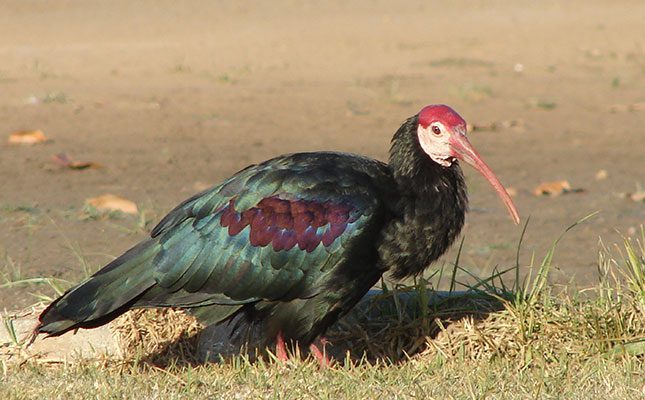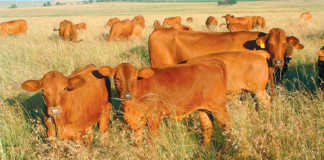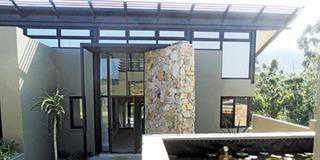
Photo: Peter Nelson
BirdLife South Africa, a non-governmental organisation dedicated to the conservation of birds and their habitats, understands the importance of the grasslands of South Africa for the conservation of birds and other animals.
For this reason, the organisation decided to focus much of its work on the grassland biome.
READ Tackling climate change and biodiversity loss
The most recent National Biodiversity Assessment shows that grasslands are one of South Africa’s most threatened ecosystems.
Grasslands are highly fragmented and threatened ecosystems due to substantial habitat loss and deterioration. In addition, these sites also support Strategic Water Source Areas (SWSA).
SWSAs provide 50% of the region’s water from 8% of the land, making them crucial to conserve in a water-scarce country such as South Africa.
Grasslands host about 20 globally threatened bird species, with 11 endemic to South Africa, Lesotho and Eswatini. These birds are found nowhere else on earth.
At least eight of these species are reliant on healthy grasslands, including Southern Bald Ibis Geronticus calvus, Yellow-breasted Pipit Anthus chloris, Botha’s Lark Spizocorys fringillaris and Rudd’s Lark Heteromirafra ruddi.
Unfortunately, grasslands are generally poorly protected, mostly due to the economic importance of this region.
Many key economic activities take place in this ecosystem, including mining (especially coal mining), agriculture, cultivation, plantation forestry and urban settlement.
Generally, the lack of physical barriers such as mountains or large rivers leads to the uncontrolled expansion of these activities, which further influences the hydrology and ecology of the landscape (e.g. reducing vegetation cover, disrupting the soil profile, and modifying water movement above and below the soil).
This can have far-reaching impacts on the ecosystem, service delivery and the economic activities that rely on a healthy environment.
Role of private landowners
There is a growing recognition of the significance of private properties in conserving grasslands, especially as we realise the limitations of formal protected areas (like national parks).
For example, BirdLife South Africa tracked the movement of several Secretarybirds from 2012 to 2015 using GPS devices. Only 8,2% of the tracking points fell within formally protected areas; all the other points were on private land.
Another example is the Southern Bald Ibis, a bird farmers in the eastern parts of the country will find familiar.
Feeding on insects and worms (including the stemborer) in grasslands and harvested croplands, they are a regular and beautiful sight in the Eastern Free State, KwaZulu-Natal, Mpumalanga and Eastern Cape.
We have also tracked some of these birds, and, similarly to Secretarybirds, they require agricultural lands with the presence of grazing, mostly on private properties, to forage and successfully breed.
Private landowners play a vital role in preserving biodiversity by implementing sustainable land management practices, and serving as essential partners in the conservation efforts outside formal protected areas.
The collaboration between private landowners and conservation organisations becomes pivotal in securing the future of these threatened grasslands and their host species, ensuring their preservation for future generations.
Protected area declaration
BirdLife South Africa has been an implementer and partner in almost 200 000ha of protected area declarations, using the Biodiversity Stewardship (BDS) model throughout the Grassland Biome, in Mpumalanga, the Free State and KwaZulu-Natal.
READ Biodiversity: a valuable ally for the farmer
This is a novel approach to protected area expansion and landscape conservation that is being recognised internationally. A legislated, policy-led programme, it expands South Africa’s protected areas network onto privately owned land.
It protects biodiversity and natural resources while allowing multiple landowners to continue with their economic activities, albeit under carefully formulated management plans that consider both needs.
With diminishing state budgets for protected area management and establishment, BDS provides the only viable alternative for South Africa to expand its protected area network to protect its grasslands.
Through BDS, relevant portions of private property are gazetted as nature reserves or protected environments as per the Protected Areas Act, providing legally binding formal protection to the site.
The property is still owned and managed by the landowner but management is done in accordance with a management plan that is submitted and signed off by the relevant provincial government.
A management authority is assigned through the legal declaration of a site to ensure appropriate conservation actions are implemented as per the management plan.
The declarations are usually in perpetuity, and the terms are registered against the title deeds of the relevant properties, making them transferable with ownership.
Sites declared by BirdLife South Africa, or where the organisation is an integral partner, include the declaration of the Sneeuwberg Protected Environment (SPE) in 2016, which conserves 17 500ha of threatened grassland habitat near Memel in the Free State.
The Ingula Nature Reserve (2018), which conserves 8 000ha of high-altitude grassland, wetland and escarpment forest near Van Reenen in KZN and was in 2021 designated a Wetland of International Importance according to the Ramsar Convention.
The Upper Wilge Protected Environment (UWPE) in the eastern Free State in 2022, protecting an additional 24 000ha in the grasslands surrounding the Ingula Nature Reserve.
BirdLife South Africa is in the process of declaring the Jadelo Nature Reserve near Vrede to protect the healthy grassland ecosystem specifically and a large multispecies breeding cliff (including Southern Bald Ibis).
It is expanding the SPE and developing a protective corridor along the escarpment to connect the UWPE and SPE.
In Mpumalanga, it led the process to declare the Middelpunt Nature Reserve in 2022. Spanning 508ha, it is the only confirmed breeding site of the critically endangered White-winged Flufftail in the Southern Hemisphere.
Support for landowners
The organisation is especially focused on providing post-declaration support to landowners in the protected environments and nature reserves to assist them with effectively managing their properties.
Though biodiversity conservation is often not the primary objective of the landowner, it tries to find ways in which agricultural operations can continue profitably alongside conservation actions.
This assistance includes ecological support, for example, using satellite imagery to monitor grassland health, soil and vegetation moisture content, and extent and severity of fires (planned or unplanned) on the property, pre- and post-burn assessments, advising on, or assistance seeking an appropriate expert on, grazing management (an objective opinion without promoting the sale of any product), habitat restoration, human-wildlife conflict and infrastructure support (including wildlife-friendly fences, owl-perches, etc).
Birdlife South Africa can also provide guidance on the legal protections that apply to privately owned protected areas, and how landowners can oppose development applications in the environmental impact assessment phases in their area that could affect these sites.
If you are interested in obtaining formal protection for your farm in the Eastern Free State, Mpumalanga, KwaZulu-Natal or the Western Cape, or are interested in finding out more about the Biodiversity Stewardship process, email Ernst Retief at BirdLife South Africa at [email protected].










